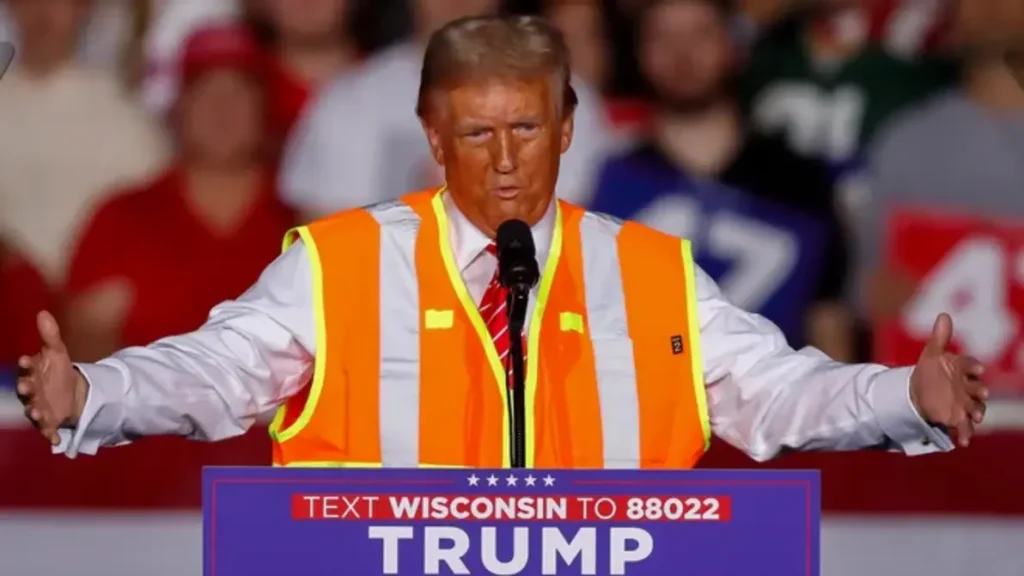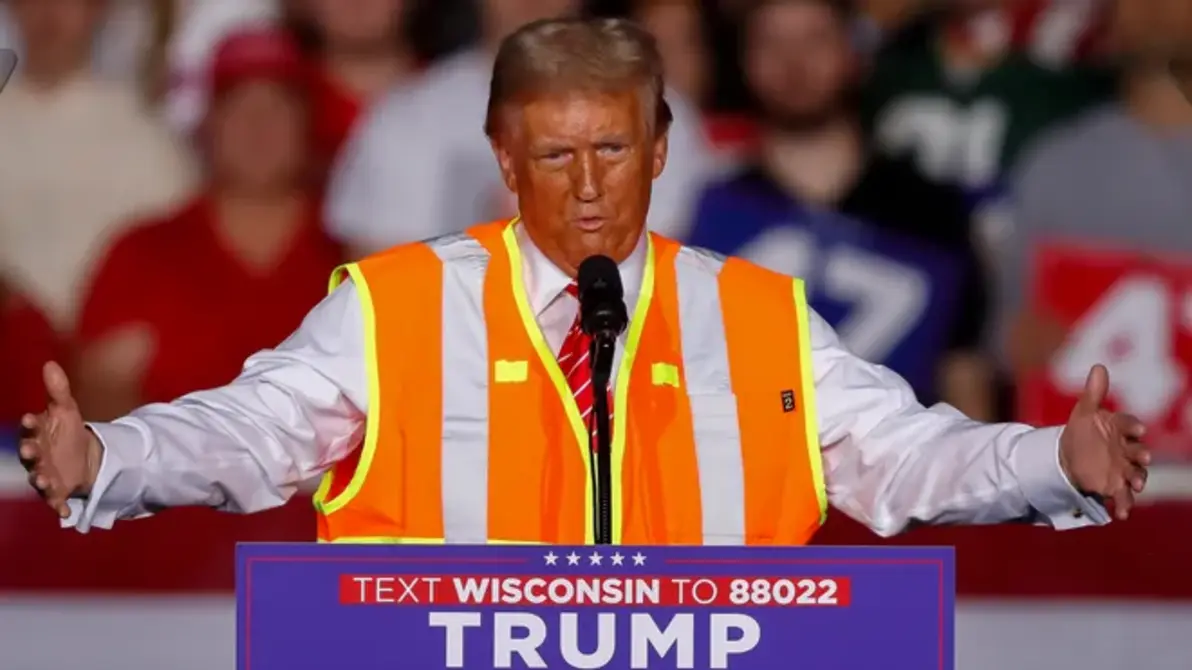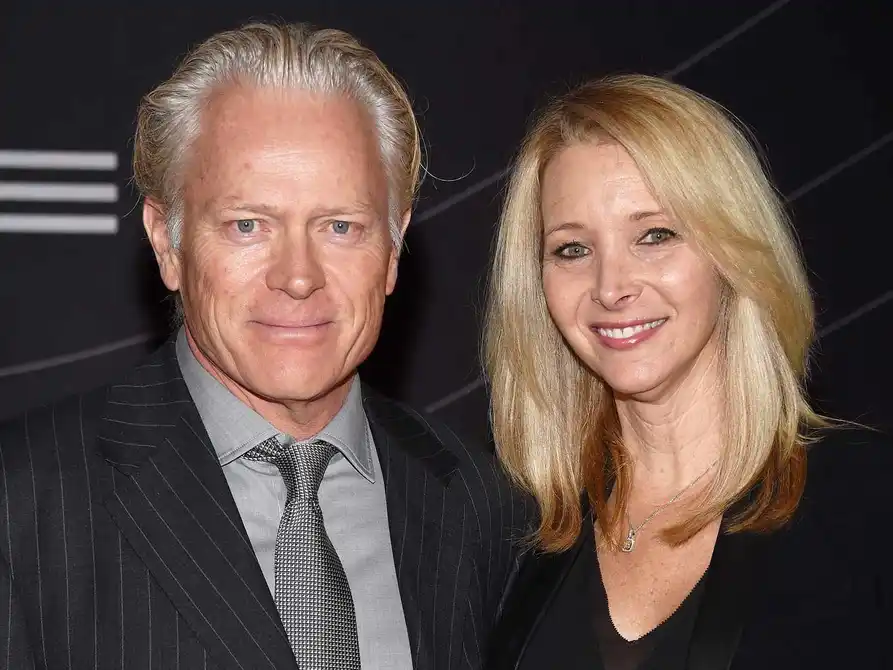The Trump Garbage Truck: In a moment that captured the public imagination, a decorated garbage truck became an unlikely centerpiece in Donald Trump’s campaign strategy and inauguration. It all began when then-President Joe Biden made a comment perceived by some as referring to Trump supporters as “garbage.” The Trump campaign responded in trademark theatrical fashion—with the arrival of a large, branded MAGA garbage truck to a rally in Wisconsin. What started as a stunt soon turned into a viral symbol, later appearing in Trump’s inaugural parade.
The Trump Garbage Truck

This article explores the story behind the truck, why it resonated, and how a vehicle designed for trash pickup became a political prop—and part of American political folklore. We’ll dive into its origins, execution, reception, and legacy. The Trump Garbage Truck
Origin Story: How the Garbage Truck Became Trump’s Prop
Turning an Insult into a Stunt
The sequence began with President Biden reportedly referring to Trump supporters as “garbage.” The remark sparked outrage among GOP circles. Seizing the moment, Trump and his campaign orchestrated a bold response: they arranged for a full‑size Loadmaster garbage truck, decked out with “Trump Make America Great Again 2024” decals and American flags, to greet him upon arrival at a Wisconsin airport. The Trump Garbage Truck Trump climbed into the passenger seat while wearing a high‑visibility safety vest and hard hat—immediately transforming a political slight into a campaign spectacle.
Logistics Behind the Scenes
The truck was organized by Loadmaster, a Michigan manufacturer. Campaign representatives texted waste‑industry contacts in Wisconsin, including Dan Roddan and Loadmaster VP Andrew Brisson. Within hours, the truck was on site, and Trump’s team created campaign magnets and flags to mount on it. The operation reportedly took place in less than a day—showcasing an ability to mobilize quickly around viral moments. The Trump Garbage Truck
The Rally Moment: Trump Meets Garbage Truck
The Arrival in Green Bay
The Trump Garbage Truck At the rally, Trump descended from his plane and after a comical struggle—reportedly missing the handle twice—finally climbed into the truck. He quipped: “How do you like my garbage truck? This truck is in honor of Kamala and Joe Biden.” He wore the vest and hard hat, blending blue‑collar aesthetics with political theater.
Rallying Blue‑Collar Support
The stunt was aimed at blue‑collar, working‑class voters—projecting Trump as connected to everyday laborers, and portraying political opponents as disparaging that very same demographic. He proclaimed that “250 million Americans are not garbage,” linking the stunt to broader populist messaging.
Media & Public Reaction
Viral Explosion Online
The imagery—a suited Trump in a garbage truck—spread instantly. Social media memes, news headlines, and late-night comedy sketches amplified the moment. Jimmy Kimmel joked about Trump struggling to get into the truck and quipped about finding fried chicken in the back of it. Others applauded the cleverness.
Political Framing
The Trump Garbage Truck Commentators dissected the symbolism: turning an insult into a prop, reinforcing Trump’s outsider image, and cementing the moment as a narrative tool. For some, it was an absurd spectacle. For others, a savvy reframing of political language.
From Campaign Prop to Inaugural Parade
Official Inclusion in Parade
Months later, as Trump prepared for his second inauguration, the same garbage truck was invited to participate in the official parade in Washington, D.C. Loadmaster confirmed that three trucks were provided, including the original one Trump rode in back in October, highlighting how a campaign stunt had evolved into ceremonial history.
Symbolic Legacy
The Trump Garbage Truck By re‑deploying the truck during the inauguration, Trump’s team cemented the moment into his broader political narrative: turning adversity into spectacle and reinforcing a brand rooted in rallying symbolism and populist theatrics.
Table: Key Timeline of the Trump Garbage Truck Events
| Phase | Event Summary |
| Insult | Biden’s remark referring to supporters as “garbage” → sparked outrage. |
| Stunt Execution | Truck sourced quickly, branded, flags added, Trump climbed in at Green Bay rally. |
| Viral Reaction | Media, memes, late-night shows amplified the imagery. |
| Symbolism | Blue-collar messaging, reframing insult, populist appeal. |
| Inaugural Parade | Truck included officially in Trump’s inauguration procession. |
Symbolism and Significance
Reclaiming Narrative
Trump converted a perceived attack into a political story, using the truck to flip the narrative. Instead of being insulted, he visually owned the term “garbage,” turning it into a sign of solidarity with supporters.
Blue‑Collar Access
Wearing a vest and hat in the truck projected authenticity—connecting with working‑class voters. For many, the imagery equated to Trump walking in their shoes—literally and figuratively.
Media Strategy
The stunt fit Trump’s long‑standing strategy of seizing media attention with bold, visual events. Critics called it gimmicky; supporters saw it as effective messaging.
And So On: Broader Context & Implications
The garbage truck moment didn’t happen in a vacuum. It tied into Trump’s broader campaign playbook: viral moments, populist appeal, symbolic gestures. The truck became shorthand for his style: brash, theatrical, unpredictable—and effective at media grabbing.
And so on, one can trace many other campaign episodes with similar dynamics: branding vehicles, props, hats, signs—each serving as a visual embodiment of message.
Quotes to Illustrate the Moment
“This truck is in honor of Kamala and Joe Biden,” Trump said, smiling from the cab.
“One of my people came in and said, ‘Sir… the word garbage is the hottest thing right now. Would you like to drive a garbage truck?’” Trump recalled.
“I have to begin by saying two‑hundred‑and‑fifty million Americans are not garbage.”
FAQ — Frequently Asked Questions
Why did the moment go viral?
The contrast—formal politics meets garbage truck—was surreal and meme‑friendly. It matched Trump’s knack for symbolic visuals.
Did the truck have significance in inauguration?
Yes, the same truck (plus two more) was featured in Trump’s inaugural parade on Pennsylvania Avenue as a symbol of reclaiming the moment.
Was the stunt received positively?
Reactions were mixed: supporters praised its theatrics; critics called it gimmicky or absurd. Media coverage was enormous.
Who organized the logistics?
The truck came from Loadmaster in Michigan, coordinated locally by campaign contacts and waste‑industry professionals like Dan Roddan and Andrew Brisson.
Joe Biden’s comment perceived as insulting triggered Trump’s team to bring a branded garbage truck to a rally. Trump climbed into it wearing a safety vest and made it central to his campaign message.
Final Thoughts
What began as an insult became political theater—and an iconic political moment. The garbage truck stunt encapsulates modern campaign culture: viral moments, pot‑shot politics, symbolic reclaiming of language. Trump’s maneuver was simple yet effective: transform a negative into a narrative and let images do the rest. It may remain one of the stranger yet memorable footnotes in recent political history—a large, branded truck that picked up more than trash.


